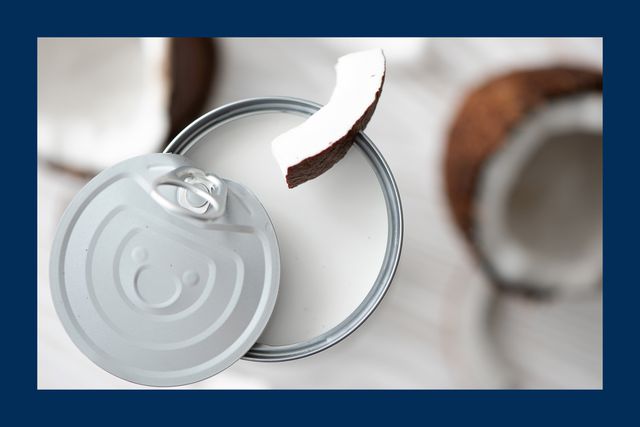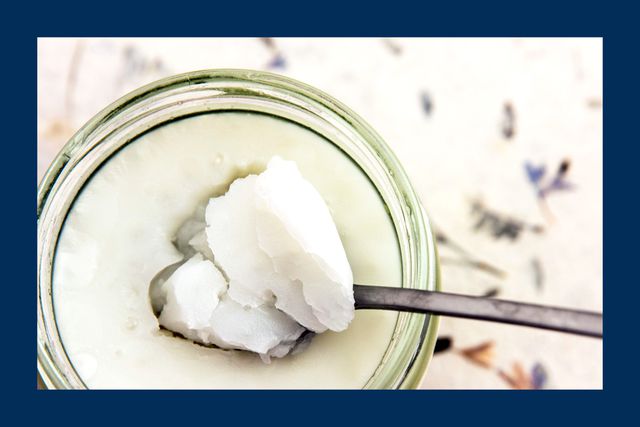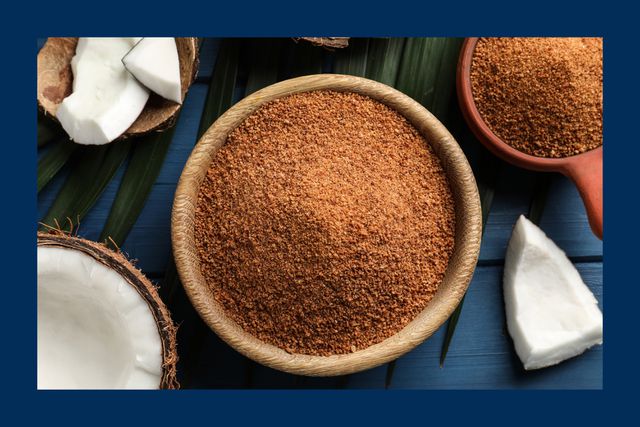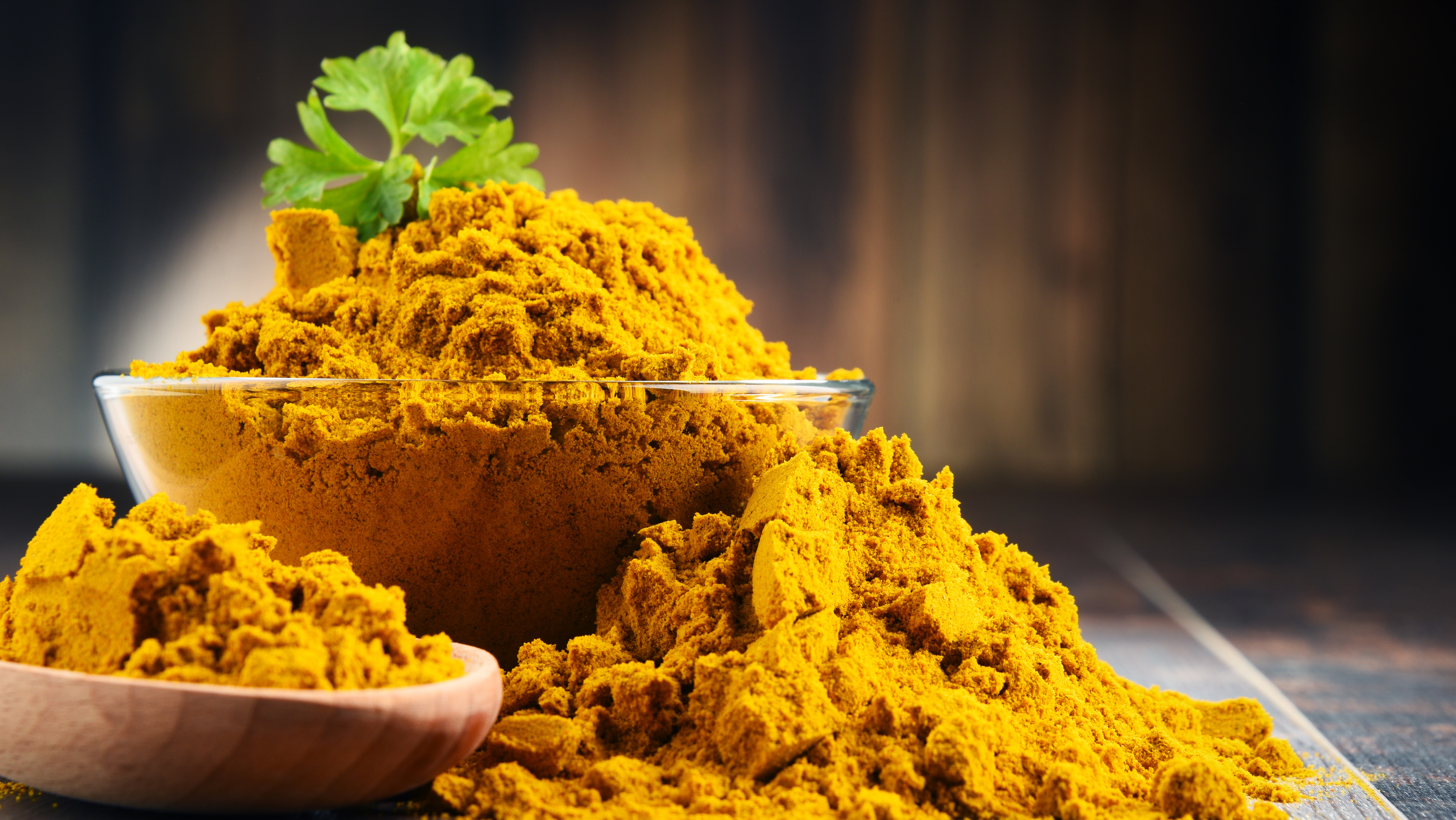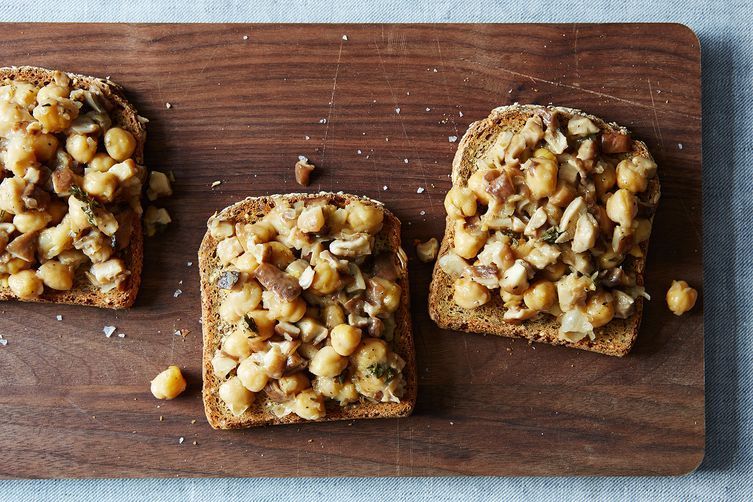Coconut as an ingredient is ubiquitous and treasured across the tropics. Indigenous to Malaysia, Indonesia, and the Philippines, its enduring appeal comes as much from its deliciousness as its hardiness and portability. A fresh coconut, depending on the size and variety, can keep for several months at room temperature, its tough shell making it easy to transport and store. And the trees themselves are a source of life. They can live for more than a century and grow to more than 100 feet tall.
Some varieties are even self-pollinating (containing both male and female reproductive components); a coconut is not actually a nut but rather a seed, each one capable of germinating and forming a new tree. In many of the island communities where coconut is a daily staple, the leaves from the trees are used for making thatched roofs, for weaving baskets that are used for storage and transportation, and as vessels for steaming food. — Von Diaz
Coconut trees and their seeds also yield a wide range of delicious and nourishing products. Hearts of palm can be harvested from young coconut-tree buds, and the tree’s sap is used to make vinegar, palm wine, and sugar. Young green coconuts contain refreshing coconut water, while the flesh of mature brown coconuts can be grated or shredded, then pureed and mixed with water to produce coconut milk, the secret to delicious Thai curries. You can easily open a coconut, or buy a wealth of packaged products. Here’s a guide to the complete coconut pantry.
Olga Gagarova / Getty Images
Coconut milkCoconut milk vs. coconut cream vs. cream of coconut
Coconut milk is made from the hard white inner pulp of mature coconut meat, which is grated or shredded — either manually or mechanically — and then mixed, strained, and squeezed in warm or hot water. The resulting thick, viscous, bright white liquid is a clean, wholly vegan, and hefty nondairy milk that contains varying amounts of fat.
Canned coconut milk is the purest form you will find without pressing the milk yourself, and adds lusciousness to recipes like Coconut Lentils or the coconut-peanut sauce for Beef Satay and Mushrooms. Some grocery stores also sell cartons of coconut milk in the refrigerated section; it has more fillers and is watered down, which makes it lower in fat but also less flavorful than canned coconut milk. It’s great for your coffee or cereal but not ideal for cooking.
The biggest difference between coconut milk and cream is the fat content. Coconut cream, which is the first press of the grated coconut, has the highest amount of fat. It is extracted using very little to no added water. (Conversely, coconut milk is made by subsequent presses following the already-squeezed pulp.) This richness makes it ideal for recipes like Thai Chicken Curry or Pineapple Coconut Soft Serve. Coconut cream is also naturally present at the top of a can of coconut milk. You can chill a can of coconut milk, then scrape off the cream at the top and use it to sauté aromatics for dishes like stir-fries and curries.
It is important to note that coconut cream is not the same as cream of coconut. The latter is a commercially processed, artificially sweetened, syrupy product that is primarily used as the basis of many desserts and cocktails, for instance piña coladas and coconut cream pie.
annick vanderschelden photography / Getty Images
Coconut oilCoconut oil
Coconut oil is a saturated-fat mixture that is processed by one of two methods: wet or dry. In the traditional wet process, an emulsion of oil and water is created from coconut milk and is then broken up by an extensive boiling period to separate out the oil. Unrefined coconut oil, which can be produced with either the wet or dry process, has a distinct nutty flavor and clean coconut aroma as well as a lower smoke point; it’s a good candidate for baked goods.
The dry process for creating coconut oil involves removing the coconut meat from the shell and drying it either by sunlight or fire or in an oven. The dried meat is then pressed or dissolved with various solvents to produce refined coconut oil. This additional processing gives refined coconut oil a higher smoke point and also makes it less aromatic and more neutral (or subtle-tasting), making it well suited for stir-frying and sautéing for dishes like Coconut Chicken Curry or Mas Riha.
Coconut water
Coconut water is the naturally occurring clear liquid present in young green coconuts. Today, it has become a popular beverage, which is mass-produced and widely available in stores. Its purest form is extracted by slicing the top hard outer layers of the green coconut with a machete, then punching a hole through the coconut to release the liquid along with a thin layer of pulp. Coconut water is refreshing, crisp, and luscious, as well as high in vitamins, minerals, and electrolytes. In addition to being consumed as a beverage, it can be used in recipes like a Coconut-Scallop Aguachile Verde or as a cocktail mixer.
Shredded coconut and coconut flakes
Both shredded coconut and coconut flakes are made from coconut flesh. The biggest difference between the two is that shredded coconut is made of smaller pieces. You can purchase either, or shred or grate your own coconut from mature coconuts for sweet and savory recipes like Coconut Macaroons, a Six-Layer Coconut Cake, or Coconut Pickled Shrimp with Chiles.
Liudmila Chernetska / Getty Images
Coconut sugarCoconut sugar
Coconut sugar, also known as coconut palm sugar, is a natural sugar derived from the circulating fluid (or sap) from coconut trees. Coconut sugar is made by collecting liquid sap from an incision in the flower of the coconut palm, then heating that sap until the water has evaporated. The resulting product is a mahogany-brown granulated sugar that is highly caloric but not as sweet as cane sugar. Coconut sugar is very minimally processed, and as a result of its origin, it contains small amounts of minerals, antioxidants, and fiber. Use coconut sugar in the crunchy cashew topping for a Coconut-Mango Kataifi Sundae, or the coconut caramel for chef Sheldon Simeon’s Ember-Roasted Sweet Potatoes.
Coconut flour
Coconut flour is a natural, versatile byproduct of coconut milk production. It is made from dried, ground coconut meat. It has a dense grain that retains more water than wheat flour. Gluten-free; high in fat, fiber, and protein; and with a low glycemic index (which helps stabilize blood sugar), coconut flour has long been used as an ingredient to guard against malnutrition. Use it in gluten-free baked goods like Coconut Flour Carrot Cake, Coconut Macaroon Brownies, and Coconut Flour Butter Cookies.
Coconut vinegar
Coconut vinegar is made by fermenting either coconut water or the sap of coconut tree blossoms. The color can range from cloudy white to amber, and it has a cutting, astringent, acidic taste and delicate yeasty undertones. Coconut vinegar is a staple in Southeast Asian cuisines. Try using it in the marinade for Chicken Inasal.
— By Brigid Washington, Adapted with permission from Islas
This article was written by Brigid Ransome Washington and Von Diaz from Food & Wine and was legally licensed through the DiveMarketplace by Industry Dive. Please direct all licensing questions to legal@industrydive.com.



